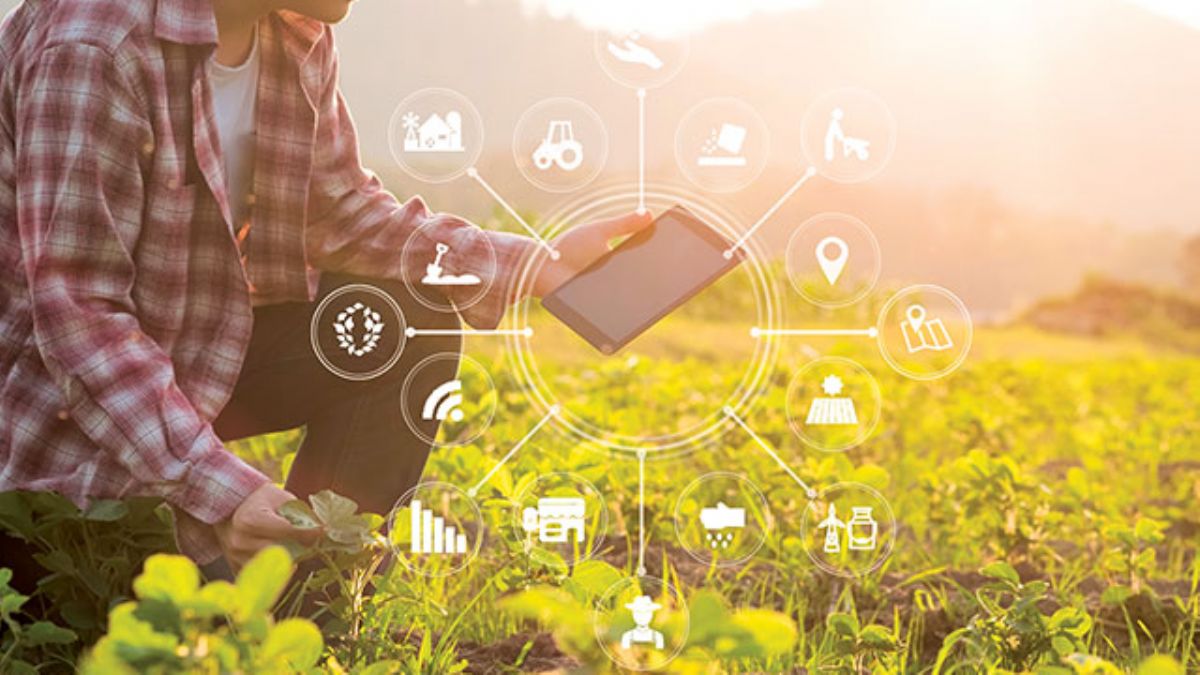Agriculture 4.0 Digital Transformation in Agriculture…

Agriculture 4.0 refers to all actions taken in agriculture based on precise and accurate analysis of data and information collected and transmitted through advanced tools and technology.
This means tools and strategies that enable the use of a range of digital 4.0 technologies, which in turn enables the automated collection, integration and analysis of data collected from the field, sensors or other third-party sources.
The purpose of these technologies is to provide farmers with the most comprehensive and definitive support in their business decision making and in their dealings with other parties in the supply chain.
The ultimate goal is to increase the economic, environmental and social sustainability as well as profitability of agricultural processes.
Agriculture 4.0 refers to the use of Internet of Things (IoT), Big Data, Artificial Intelligence and Robotics to expand the effectiveness, accelerate and increase the efficiency of activities affecting the entire production chain.
Adopting 4.0 solutions in agriculture means:
• Avoiding unnecessary waste by precisely calculating the water requirements of the crop or detecting the onset of certain plant diseases or pests in advance
• Have more control over cost and be able to plan all phases of planting, planting and harvesting with great precision, saving both time and money
• Improving supply chain traceability can result in a short supply chain that can produce high quality food sustainably with little margin for error.
Agriculture 4.0 Technologies and Data Management
When we talk about Agriculture 4.0, we specifically mean:
• Use of the most innovative technologies
• Ability to manage the amount of data and information from domains
• And be able to interpret them in a way that is beneficial for the industry.
But what are the key technologies that can be used to digitize an agribusiness?
Drones and Sensors
Drones are small unmanned aerial vehicles that can monitor products in real time, as well as transmit images and useful information. They are mainly used for terrain mapping, but the most advanced versions use infrared sensors and vision systems to detect problems that cannot be detected with the naked eye.
Environmental sensors, on the other hand, are capable of recording climatic weather data and information on soil moisture requirements.
Internet of Things (IoT)
This technology enables various tools (e.g. drones, sensors or satellites) to interconnect and communicate to exchange information as well as useful data to improve crop development conditions.
Big Data
The concept of Big Data refers to all the information and data produced by various technologies that will help make more efficient decisions in the production process.
As a result, these datasets are very different as they come from different sources and must be processed by artificial intelligence to provide practical answers to specific problems.
Artificial intelligence
With this term, we refer to technology that instructs machines to evaluate certain situations and make decisions in real time.
The ability and know-how to process and interpret large amounts of data is the main input for machine learning.
There are two main application areas
• Robots using machines that automate certain tasks
• Management software that reduces the hours employees spend on automated and repetitive tasks
Cloud Technologies
It is a set of accessible services and shared resources on the network; It is a useful tool to enable more people to access certain technologies and data.
This can help smaller companies that are economically disadvantaged and have less internal skills.
The management of data and information is very important;
• It provides an understanding of the economic value for each company that uses this information.
• Helps us understand what data is really useful and how it can be used (technology management level)
• Ensures that the collection of this data complies with the latest European privacy regulations and avoids concentration of information in the hands of a few companies (legal management level)
Why it is important to move to Agriculture 4.0:
There is no doubt that Agriculture 4.0 offers a number of advantages, although there is still great hesitation towards this new way of understanding agriculture and the new technologies associated with it.
Economic advantages: Despite the costs of the technologies, the real economic benefits of such farming and tools are well known. Greater control over operations leads to optimization of resources and consequently less wasted water and fertilizer. All this means savings for the farmer. We are talking about savings in production inputs of around 30% with 20% productivity increase.
Environmental benefits: There is one aspect of agriculture that should not be taken lightly, and that is sustainability, which will be a defining feature of the agriculture of the future. Agriculture 4.0 is specifically designed to improve the sustainability of agricultural activities and the environmental impact of the entire food chain.
Benefits for workers: It is well known that new technologies also improve the working conditions of the operator.
Health benefits: Continuous and precise monitoring of every step of the production chain contributes to a higher quality end product that is undoubtedly beneficial to health. It is estimated that products in a high-tech supply chain retain their properties and are therefore healthier.